The Seobu path
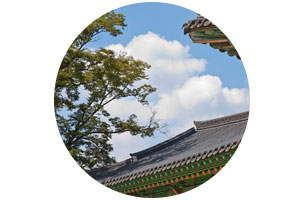
Geumsunggwan (Government Office)
Every first day of month and in the middle of the month officials and scholars used to gather to hold a ceremony for Hanyang Castle by putting tablets that symbolized the king in the middle of the Geumsunggwan. Compared to the ceremonies normally held annually on birthdays for the king and queen, in Naju this ceremony was held twice each month, a fact that speaks of the importance of Geumsunggwan as a regional castle. It is quite rare to have magnificent buildings like Geumsunggwan in regional areas. It also has a sense of majesty about it as representation of the resistance against Japan.
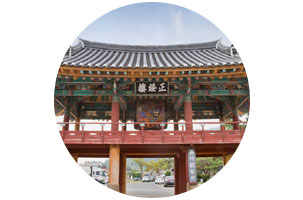
Jeongsuru (正綏樓)
As its name represents, it asks people who are entering government office to have a gentle attitude and a relaxed mindset. It is recorded in the town chronicle that Jeongsuru was built by the officer Woo Bong-nyong, who newly arrived in Naju in 1603 (year 36 of the reign of King Seonjo). There is a hanging drum here akin to the Sinmungo in Seoul. People of Naju could use the drum to directly report their unjust circumstances to the officers.
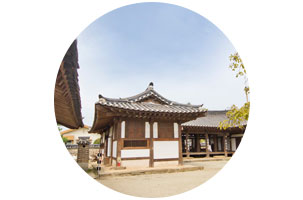
The Officer’s Living Quarters, Geumhakheon
Nae-a (內衙) refers to the house of the main local government officer during the Joseon Dynasty. The place where the head officer worked was called Dongheon (or Waedongheon) and the Nae-a was also called the Naedongheon. Geumhakheon is the name of the Naedongheon where the Naju head officer lived. Geumhakheon is the only Naju government office heritage building that people can actually use as an accommodation facility. The place has become more famous after it was used as a filming site for the KBS reality show “1 Night, 2 Days.” It is being used as an avenue for people to experience what government officer accommodations were like.

The Seventh Sabbath Church, the Second Advent of Jesus Church
The Second Advent of Jesus Church is the oldest church in Naju. In 1914, Lee Geun-eok and Kim Seok-yeong, missionaries spreading the gospel in Yeongnam, were sent to Honam and the very first place they began missionary work was Naju. It was the first church built in Naju during the Japanese colonial era. The building on the left was built in 1961. The two different styles of church have achieved harmony to help spread the word to the people of Naju.
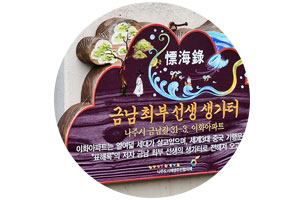
Home of Choi Bu and Wealthy Man Yang
The site where the Ewha apartment complex was built used to be the house of Choi Bu, who represented Naju during the Joseon Dynasty. He is well known as the author of Pyohaerok. Later the wealthy man Yang Dong-ho lived in this location. However, the house was burnt down in a fire while making rice cakes on the last day of month after independence. We can get a sense of the honor of the old days through the stone wall that serves as the sole remnant of that time. It is located on the west side of the Ewha apartment complex.
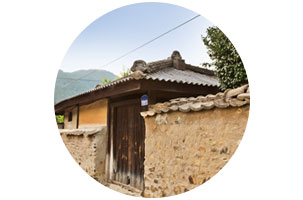
Barley Yard Street
There is an open area in the middle of the long alleyway that is called Barley Yard Street because people used to thresh barley and lay it out to dry here. By recalling the poem “Barley Threshing” written by Son Gwang-eun, you will be able to imagine the scene of this alleyway more vividly.
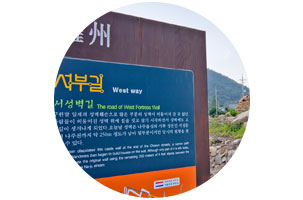
West Rampart Path
The Naju Eupseong Fortress is nestled with its back to the mountain and facing the water like most fortresses in Korea. The Yoengsan River is located in front and Geumseong Monuntain, the guardian mountain of Naju, is located behind. The rampart is mostly built on flatland except in the north and some parts of the southeast, which is rare in Korea.

West Fortress Gate
The West Fortress Gate is located right under and facing Geumseong Mountain. Its original name was Yeonggeum Gate. The fortress was built to protect people from enemies and this gate is the most vulnerable area where the fiercest battles took place. The West Fortress Gate was also the location of a most tragic and fierce battle between Joseon forces and the Donghak rebellion army.
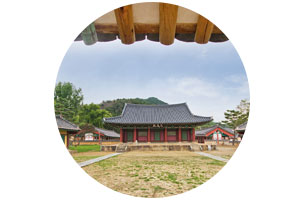
Naju Hyanggyo (Confucian School)
The Naju Hyanggyo is settled under the Jangwon Peak of Geumseong Mountain. King Seongjong of Goryeo ordered the construction of hyanggyo (Confucian schools) in 12 villages in August 1986. It seems Naju built this hyanggyo at that time. There are two stones standing at the entrance of the hyanggyo that have the words ‘Naju Hyanggyo’ and ‘大小人貟皆河馬’ engraved on them.
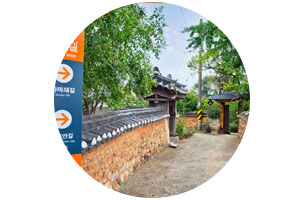
Samajae Path
Samajae is the place where students who passed a test called Samasi (司馬試) and Jinsa (people who passed the first government official exam) gathered to study and train the younger generation. It is like an intermediary school between the hyanggyo (Confucian school) and the sawon (Confucian academy). Now Samajae offers a Chinese classic reading program that university students can attend while on vacation. It progresses systematically, teaching the classics beginning with Sohak, then moving on to Tonggam, Saseo and Samgyeong.
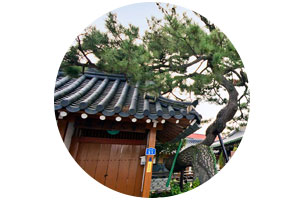
Irodang and the Pine Tree
This place was originally the office of the Hojang, head of the Yukbangisuk. It was called Jusachung or Hojanachung, but is currently being used as a Naju seniors’ center. The Naju Iro Club took over this place and called it “Irodang,” the name of the seniors’ center. The best attraction around Irodang is a pine tree. It looks like a dragon that is about to take flight, so it has been given the name “dragon pine tree.” This tree is a black pine tree, which is hard to find around Eupseong fortresses.
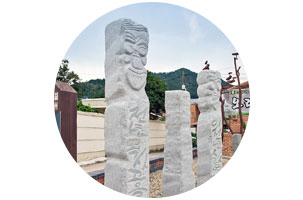
Ideal Location Street
This street has been well known for a long time as an ideal location to live in around the Naju Eupseong Fortress. The neighborhood was formed a long time ago and local officers used to live here. There was a temple called Yejodang where people held ceremonies for the guardian spirit of Geumseong Mountain. The temple was destroyed near the end of the 1970’s, but the Naju Jeong family held ceremonies for the mountain until the last days of the temple.
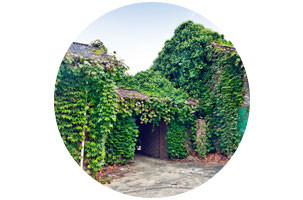
Sachang Street
Sachang is a kind of storage house that the government office used to store grains. The street behind Geumseong Mountain used to be the sachang street where grain was stored. The sachang is gone now, but a 400-year old zelcova tree is still guarding the street. People also call it the Dangsan tree, so the street is also called Dangsan Street.
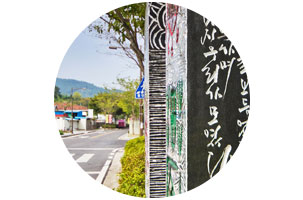
Samaegi and Hyangcheong
Hyangcheong was a local government office that assisted the local leader. It was an advisory organization of powerful local families established to support the local leader. It was initially known as the Samaegi and had the role of reforming local customs while serving as an inspection organization that cracked down on the corruption of local officers. Its function was reduced after the Japanese invasion and became known as the Hyangcheong.
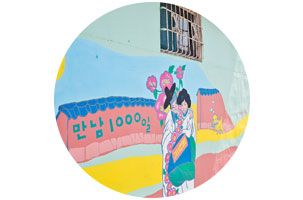
Romance Alley
Romance Alley is a tiny long alley that runs along the east wall of Geumseonggwan. It was given this name because when a man and woman happened to walk by each other in this alley their clothing and shoulders might touch, leading them to fall in love. So many newlywed couples visit this alley.
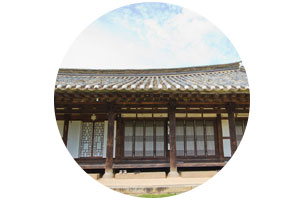
The Old House of Nampa
The old house of Nampa is owned by the Miryang Park family and was designated as the nation’s 263th important cultural property. It has high cultural value because it was built in the early to mid-20th century and still vividly represents the transition into the modern hanok (traditional Korean house) architectural style. It also represents a typical house of the upper class in the Jeolla Province..

